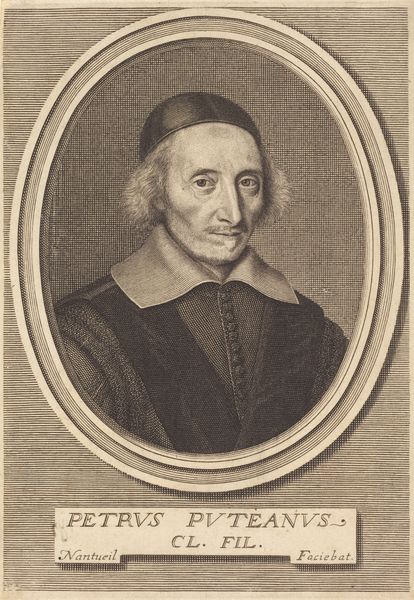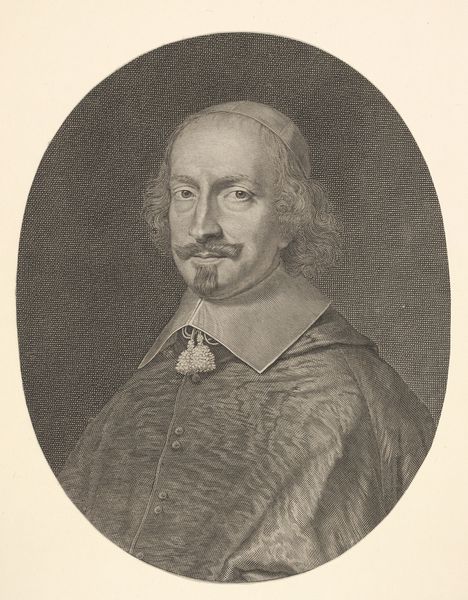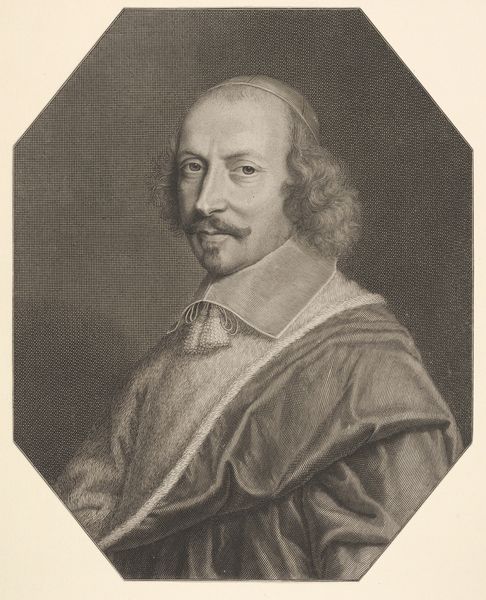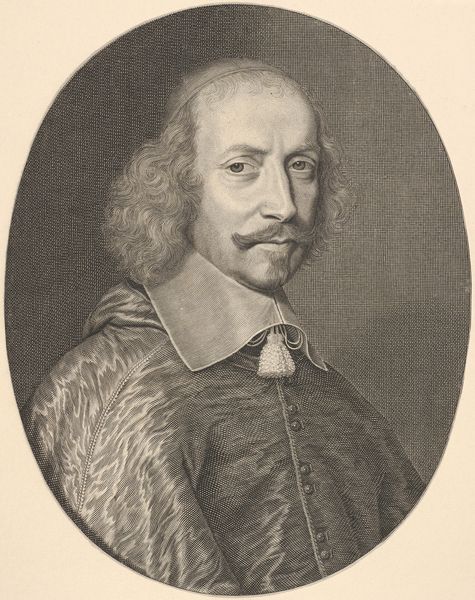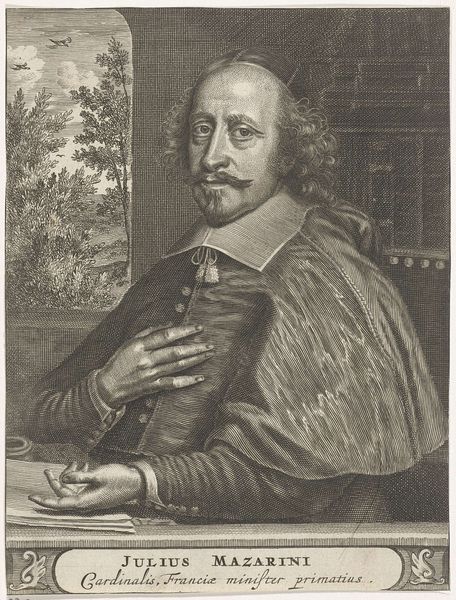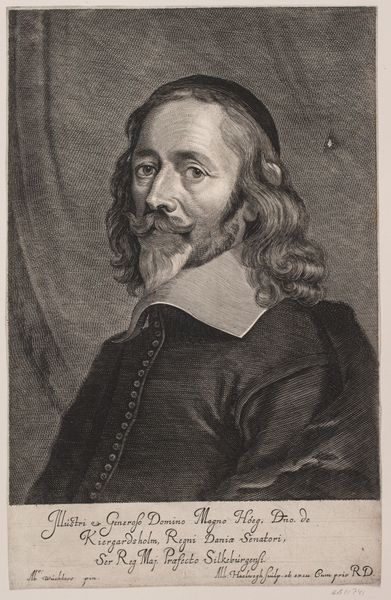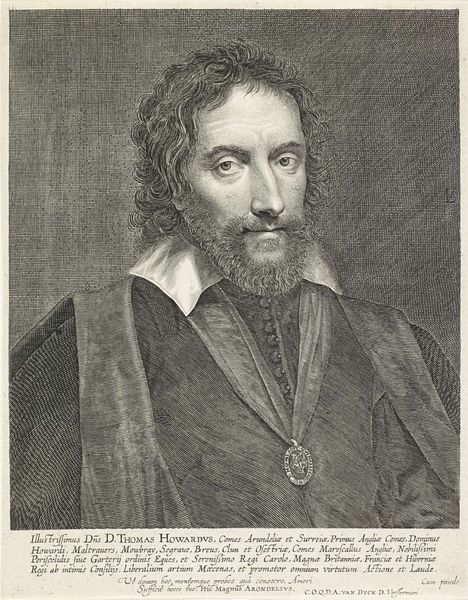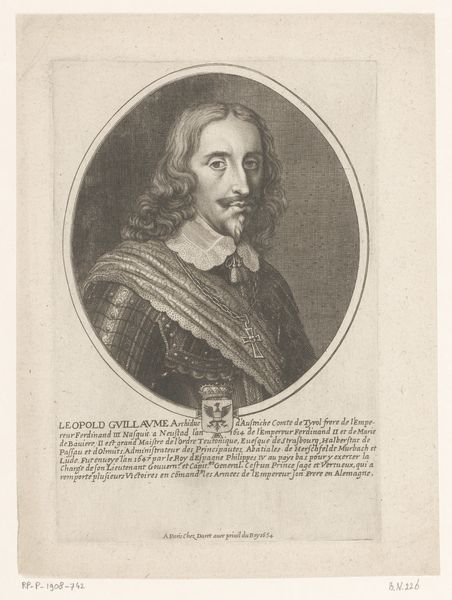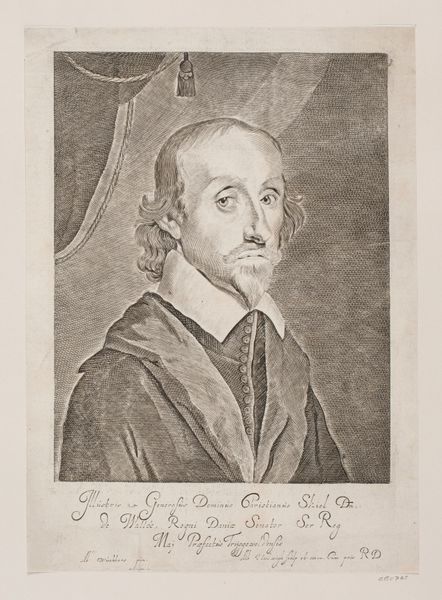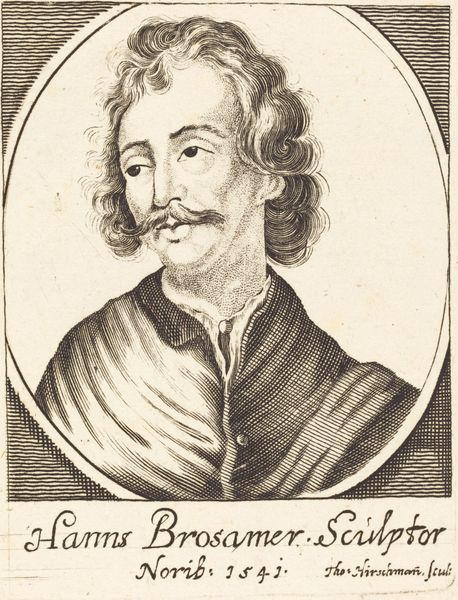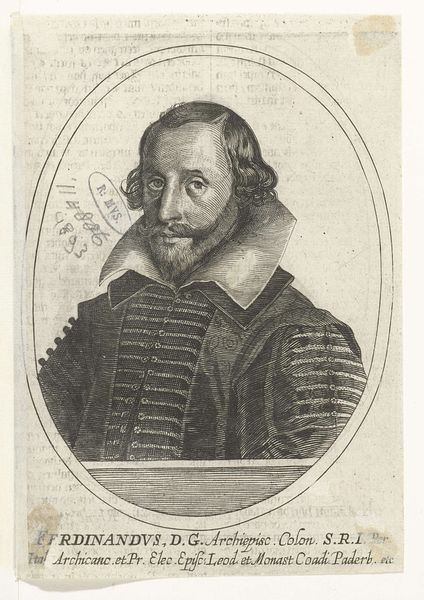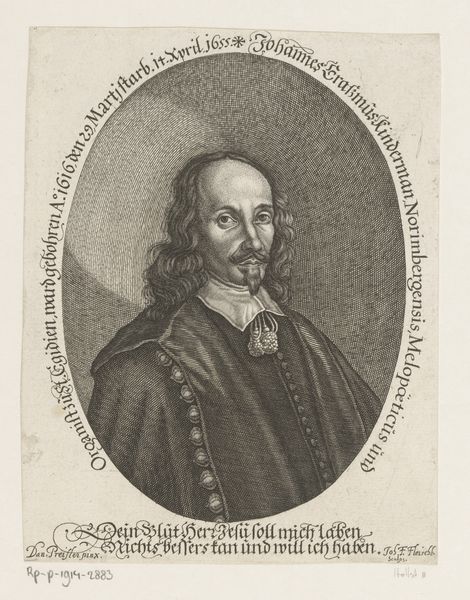
print, engraving
#
portrait
#
baroque
# print
#
engraving
#
portrait art
Dimensions: 325 mm (height) x 212 mm (width) (bladmaal)
Curator: We are now observing a remarkable engraving by Albert Haelwegh, titled "Christen Skeel," created between 1655 and 1659. Editor: The level of detail is astonishing. Just look at the textures created by the engraved lines! It really conveys a certain somberness in the subject. Curator: Precisely. Christen Skeel was a significant figure in Danish politics, serving as a senator during a tumultuous period. This image acts as a testament to the power structures of the time and how they intersected with individual identity. Consider, if you will, how portraiture in this era worked to reinforce aristocratic power, perpetuating social hierarchies. Editor: Yes, but let’s not overlook the materiality here. The use of engraving—a laborious and technically demanding process—speaks volumes. Each line, each shade, painstakingly etched to create the final image. It suggests value. Consider how the very means of production—the time, the skill, the copper plate itself—contributes to its message. It's not merely an image, it's a crafted artifact embedded in a network of production. The consumption of this print also played a significant role, shaping its context and distribution. Curator: I agree. The technical skill displayed undeniably contributes to the portrayal of status. And yet, consider the implications of Skeel’s gaze. Do we detect a hint of vulnerability behind that stern facade? Or is it merely a construct, a carefully curated performance of masculinity within the constraints of his social position? The work begs the question: how can portraiture of this era both reflect and challenge the very power structures it embodies? It certainly compels the viewer to question notions of Danish identity during the period, and perhaps our contemporary assumptions too. Editor: Absolutely. And while we dissect his gaze, it's vital not to lose sight of how prints like these were disseminated. The material conditions – the printing press, distribution networks – enabled these images to circulate widely, extending Skeel’s influence. In many ways he was consumed as much as represented in this medium. This really forces us to reassess art beyond simple representation and its role as part of wider socioeconomic currents. Curator: Ultimately, "Christen Skeel" invites us to delve deeper into the complex interplay of power, representation, and identity. Editor: It also challenges us to value craft and labour, to seek a much deeper comprehension of artwork through the analysis of how they are created, and circulate.
Comments
No comments
Be the first to comment and join the conversation on the ultimate creative platform.

